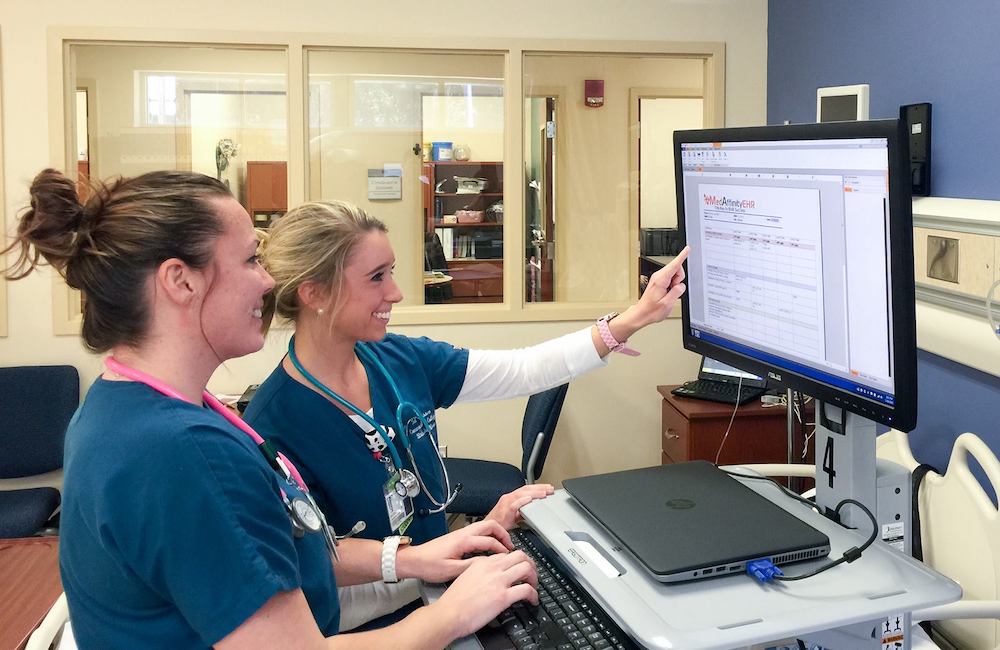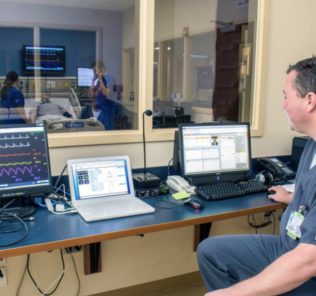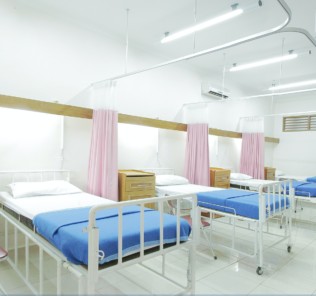MedAffinity Provides EHR Software for Powerful Results, Minimal Effort
MedAffinity provides innovative, intuitive, and powerful electronic health records (EHR) software for training the next generation of medical professionals. Further, the company harnesses the full capability of data-driven computing to deliver powerful data capture and speed the documentation process, with the specific needs of education in mind. This is made possible because the software was designed to make the documentation process feel as natural as possible, with an interface that looks, acts, and feels like a real document. Thanks in part to the software’s flexible interface, MedAffinity can easily adapt to new documentation and curriculum requirements without any of the delays, expensive upgrades, or convoluted configurations associated with alternative software solutions.
According to MedAffinity, educational simulation environments have different needs than live hospitals, which is why the company designed the EHR for Education to solve problems unique to the simulation environment—without compromising the student experience of using a real-world EHR. MedAffinity believes faculty and administrators, not your educational EHR, should decide what and how learners acquire knowledge.
Additionally, MedAffinity thinks that an educational EHR should allow learners to focus on the skills needed to care for people, instead of spending time wrangling software. Another fundamental company belief is that healthcare simulation staff shouldn’t have to spend time performing repetitive item-by-item deletion after each simulation session.
Sponsored Content:
“We’re not wasting your time with stripped-down software. MedAffinity EHR for Education is adapted from a real, federally certified EHR that we’ve meticulously tailored to the unique demands of the educational environment,” MedAffinity shares on the company website.
That means that MedAffinity EHR retains the full, complete functionality demanded by modern medical practice. With MedAffinity EHR, the goal is that learners won’t be caught off-guard in a real hospital environment. The software stretches beyond the clinical simulation environment to classroom case studies, informatics, and more. Almost anything an educator can think of as being practical training for learners, MedAffinity can create or teach them to do it themselves.
“MedAffinity’s dual experience in both clinical and educational environments is invaluable as it delivers exactly what both educators and learners need quickly, seamlessly, and without nonessential steps,” said Dr. Robert Amyot, the president of CAE Healthcare.
“The response we received from faculty and staff was overwhelmingly positive,” added Carla I. Dormeus, M.S, EMT, a clinical simulation program manager at Tallahassee Community College.
Sponsored Content:
MedAffinity Software
Intuitive Word Processing: The MedAffinity EHR interface is designed to look, act, and feel like a real document. Behind the scenes, data is captured with every click. Configure MedAffinity to meet the needs of faculty by placing their existing document-style materials right into the system. MedAffinity adapts to new curriculum content, ideas, and standards, which means the EHR does not dictate the way faculty teach.
Powerful Summaries: The MedAffinity Summary allows learners to dive right into education by making viewing the information they need to see easy. Learners do not need to waste time aimlessly searching for information—as the company’s effortless summary system allows them to quickly select summary boxes to rapidly fill out their charts, or roll their mouse over documents in the chart to instantly view any particular item in full detail.
Rapid Review: MedAffinity EHR features robust documentation retrieval and search functions, allowing faculty to quickly and efficiently review documentation authored by learners. MedAffinity also gives faculty powerful search tools to easily find documents authored within specific date ranges in a particular course, authored by a particular learner, or containing particular criteria.
Key Features
Clinical Backbone: MedAffinity has all the power of a clinical EHR, specially adapted for education. The company became a federally certified EHR in 2012, and in 2014 we began working with Tallahassee Community College to adopt the EHR for academic uses. This was while retaining all the functionality required for a medical practice, and MedAffinity hasn’t stopped perfecting the solution since.
Live Scenario Editing: With Medaffinity, faculty aren’t limited to static scenarios. MedAffinity’s powerful scenario editor allows instructors to dynamically modify scenarios in real-time during class. With MedAffinity’s “Back to Start” feature, instructors can quickly and efficiently reset a scenario for the next class, with no manual deletion required.
Adapt to Needs: With MedAffinity, instructors can adapt the wording and modify templates, rearrange the chart summary to emphasize specific aspects of the patient chart, and more. MedAffinity instructors can also make scenario adjustments themselves, eliminating the need to spend time and money on custom programming or support calls.
Tap-to-Select Menu: MedAffinity combined the strengths of a word processor with an effortless Tap-to-Select Menu. The company’s single-screen charting interface and prebuilt staged templates let users enter large amounts of patient data quickly and efficiently. Instructors report that students learn the MedAffinity system in about 15 minutes.
EMAR Barcode Scanning: A barcode-enabled electronic Medical Administration Record (eMAR) is built right into the Patient Chart. The eMAR can use the clinical simulation drugs an educator already has, including Demo-Dose, Practi-Meds, or their own. There’s no need for specialized readers; standard, inexpensive barcode readers work with the system.
Import Scenarios: There’s no need to start from scratch; MedAffinity’s flexible template builder lets educators use clinical simulation scenarios they already have. MedAffinity teaches users to use straightforward tools for importing their scenarios into the MedAffinity system and customize the progress notes and other elements as instructors prefer.
MedAffinity Health Informatics
The rapidly expanding field of Health Informatics is transforming the work of health professionals everywhere. According to the Bureau of Labor Statistics, growth in the health information technology sector is projected to roughly double the average growth rate across all occupations in the U.S. EHRs and related systems, as the backbone of institutions’ data management is, therefore, an increasingly integral component of healthcare education. Thus, MedAffinity EHR is the ideal platform for educational institutions to get ahead of the game and best prepare students for the digital future.
“We’ve designed MedAffinity EHR for Education to incorporate the power of in-practice clinical EHRs, coupled with the flexibility and adaptability demanded by top educational institutions. We believe an EHR that can evolve alongside your Informatics curriculum is a practical necessity in teaching students how to truly integrate health information into better, more efficient patient care,” the company notes on its website.
Ultimately, MedAffinity EHR for Education leapfrogs competitors in providing flexible, faculty-defined tools and scenarios for teaching Health Informatics. The company’s system adapts to a user’s style, importing clinical simulation scenarios from any source and allowing instructors to build unlimited templates for data and progress notes, customized to whatever unique experiences they wish to craft for their learners. MedAffinity EHR’s lean, yet powerful, interface allows learners and instructors to truly focus on patient care.
Learn More About MedAffinity EHR
Lance Baily, BA, EMT-B, is the Founder & CEO of HealthySimulation.com, which he started while serving as the Director of the Nevada System of Higher Education’s Clinical Simulation Center of Las Vegas back in 2010. Lance is also the Founder and acting Advisor to the Board of SimGHOSTS.org, the world’s only non-profit organization dedicated to supporting professionals operating healthcare simulation technologies. His co-edited Book: “Comprehensive Healthcare Simulation: Operations, Technology, and Innovative Practice” is cited as a key source for professional certification in the industry. Lance’s background also includes serving as a Simulation Technology Specialist for the LA Community College District, EMS fire fighting, Hollywood movie production, rescue diving, and global travel. He and his wife Abigail Baily, PhD live in Las Vegas, Nevada with their two amazing daughters.
Sponsored Content:




















